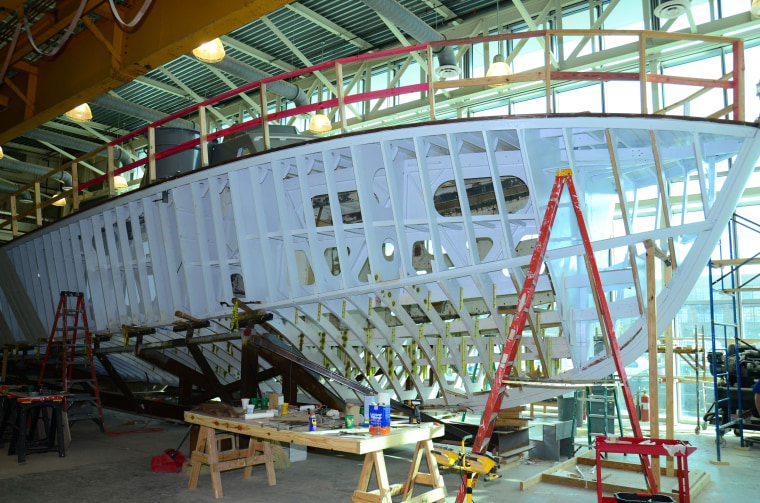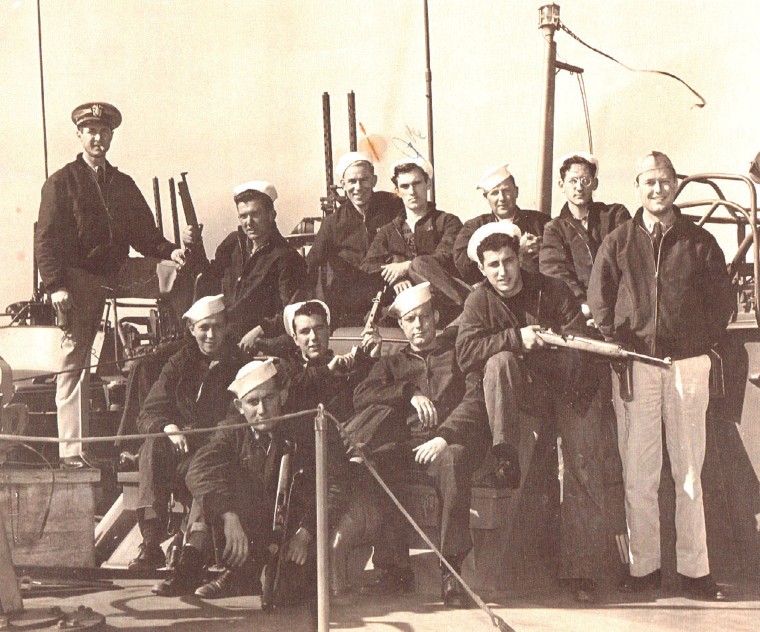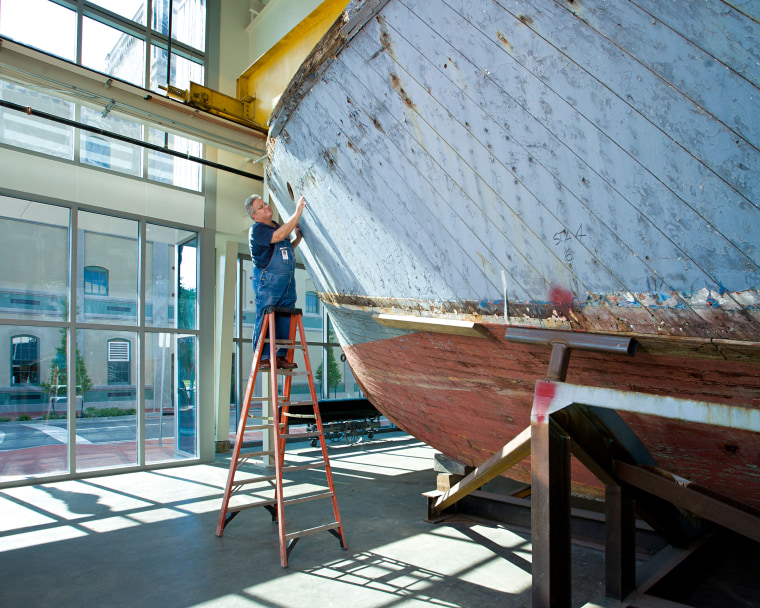After a decade of restoration, the world’s only fully restored, operational, combat-seasoned Patrol Torpedo boat, PT-305, is finally seaworthy.
“I always knew we would finish this,” said Tom Czekanski, senior curator for the National World War II Museum in New Orleans. “Ten years later, this is real.”
PT-305 served in European waters from 1944 to the end of World War II. The vessel was credited with sinking a German Flak lighter and an Italian MAS boat. After the War, PT-305 was modified for work as an oyster boat in the Chesapeake Bay and a tour boat in New York City.
When the National World War II Museum acquired the ship in 2007, it was in serious disrepair, rotting in a dry dock in Galveston, Texas.
“It took a lot of vision, dedication and perseverance, but we never gave up,” said Captain George Benedetto, the ship’s new commander.
A passion project for museum curators and volunteers, the restoration process not only took time and money, but luck as well. Finding the pieces to be able to restore the vessel was no easy task.
“We got pieces from all over the United States and the world,” said Czekanski. “The radar dome came from a collector in Australia. The engines came from a farmer in Indiana who used them in tractor pulls. The torpedoes came out of Ohio, the machine guns came out of Kentucky. We found the heat exchangers in California. And we found the site for the torpedoes on eBay.”

For Czekanski, this was no ordinary project.
“I remember my father, my uncle, my aunt all served. And my mother and my father-in-law were all in factories. So,” he said, as tears came to his eyes, “it's very personal. I'm helping, not only to remember my relatives, but all of the Greatest Generation.”
Of the 16 million veterans who served in World War II, 620,000 are still alive, including Jim Nerison, a WWII veteran and service member aboard the PT-305.
“The first time I rode this boat, I fell in love with it,” said Nerison, inside the living quarters that once housed his bunk. Speaking to NBC News’ Kerry Sanders, Nerison recounted his service aboard the vessel. Now 92 years old, he remembers the vibration of its engines and its speed and flexibility.
“I was having fun 90 percent of the time,” said Nerison. “What can I say? I was just having a good time. Course, I was just a kid, wasn't I?”
The National World War II Museum will offer 90 minute rides for the price of $350 per person. The public can begin participating in a part of living history beginning on April 22.

